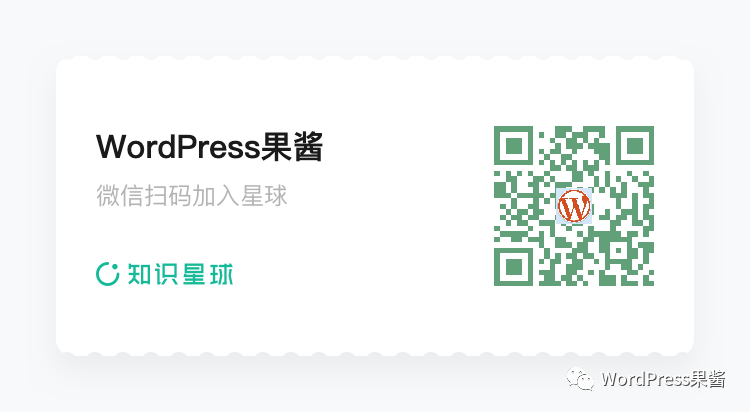先简单说下什么是 WordPress 多站点,WordPress 多站点就是一套程序,通过子域名或者目录的方式可以开启无数个子站点,后期还可以绑定域名,看起来和普通的 WordPress 站点没什么区别。
比如我们做的花生小店,就是通过 WordPress 多站点模式支撑起 2 万多个站点的电商小程序 SaaS 服务。
switch_to_blog 之后
知道了 WordPress 多站点,那么下一步就是在 WordPress 多站点环境下做开发,做过这方面开发的朋友知道多站点开发最大的问题,就是切换站点获取数据。
比如用户登录花生小店的商户助手的小程序,要对自己店铺的某个商品进行编辑,我们就要切换到他的店铺,完成之后再切换回来,我们定义了一个相关更新商家商品的函数,为了演示简洁,这里我们只修改标题:
function wpjam_update_shop_product($shop_blog_id, $id, $title){
switch_to_blog($shop_blog_id); // 切换到商家的店铺
wp_update_post(['ID'=>$id, 'post_title'=>$title]); // 更新商品信息
restore_current_blog(); // 切换回商户助手的站点
}看起来还好,如果我们需要把更新的信息返回,最简单的办法直接在 wp_update_post 函数前面加个 return:
function wpjam_update_shop_product($shop_blog_id, $id, $title){
switch_to_blog($shop_blog_id); // 切换到商家的店铺
return wp_update_post(['ID'=>$id, 'post_title'=>$title]); // 更新商品信息
restore_current_blog(); // 切换回商户助手的站点
}这样就出问题了,因为 return 之后的代码不会被执行的,那么用个变量记录一下结果,切换回再返回:
function wpjam_update_shop_product($shop_blog_id, $id, $title){
switch_to_blog($shop_blog_id); // 切换到商家的店铺
$result = wp_update_post(['ID'=>$id, 'post_title'=>$title]); // 更新商品信息
restore_current_blog(); // 切换回商户助手的站点
return $result;
}这样可以,但是如果程序里面不这么简单,由多个地方出错了,要返回?
function wpjam_update_shop_product($shop_blog_id, $id, $title){
switch_to_blog($shop_blog_id); // 切换到商家的店铺
$result = some_function(); // 执行一些操作
if(is_wp_error($result)){
return $result; // 如果发生了错误,要抛出错误
}
$result = some_other_function(); // 执行另外一些操作
if(is_wp_error($result)){
return $result; // 如果发生了错误,要抛出错误
}
$result = wp_update_post(['ID'=>$id, 'post_title'=>$title]); // 更新商品信息
restore_current_blog(); // 切换回商户助手的站点
return $result;
}这样又出问题了,因为前面错误的返回造成 restore_current_blog() 没有被执行到,当然有同学会说,在每个错误抛出之前,执行 restore_current_blog,这样当然可以,但是代码看起来真的太太啰嗦了。()
function wpjam_update_shop_product($shop_blog_id, $id, $title){
switch_to_blog($shop_blog_id); // 切换到商家的店铺
$result = some_function(); // 执行一些操作
if(is_wp_error($result)){
restore_current_blog(); // 切换回商户助手的站点
return $result; // 如果发生了错误,要抛出错误
}
$result = some_other_function(); // 执行另外一些操作
if(is_wp_error($result)){
restore_current_blog(); // 切换回商户助手的站点
return $result; // 如果发生了错误,要抛出错误
}
$result = wp_update_post(['ID'=>$id, 'post_title'=>$title]); // 更新商品信息
restore_current_blog(); // 切换回商户助手的站点
return $result;
}我们可以使用 try / catch / finally 来保证 restore_current_blog() 一定会被执行。
function wpjam_update_shop_product($shop_blog_id, $id, $title){
try{
switch_to_blog($shop_blog_id); // 切换到商家的店铺
$result = some_function(); // 执行一些操作
if(is_wp_error($result)){
return $result; // 如果发生了错误,要抛出错误
}
$result = some_other_function(); // 执行另外一些操作
if(is_wp_error($result)){
return $result; // 如果发生了错误,要抛出错误
}
return wp_update_post(['ID'=>$id, 'post_title'=>$title]); // 更新商品信息
}finally{
restore_current_blog(); // 切换回商户助手的站点
}
}这样甚至前面我们连用于保存更新商品的 $result 变量也不需要,因为 finally 关键字保证了 restore_current_blog() 一定会被执行。
wpjam_call_for_blog
但是如果所有的多站点开发都要 try / finally 处理,以及 switch_to_blog 和 restore_current_blog 的切换站点和恢复原站点的操作,还是挺烦人的,很容易出错,所以我写了一个高阶函数,把这部分操作封装起来,你直接需要简单调用即可即可:
function wpjam_call_for_blog($blog_id, $callback, ...$args){
try{
switch_to_blog($blog_id);
return call_user_func_array($callback, $args);
}finally{
restore_current_blog();
}
}只需要传递要执行代码的站点 ID($blog_id)和执行的回调函数($callback)以及相关的参数($args)即可,那么上面的更新函数,我们改一下:
function wpjam_update_product($id, $title){
$result = some_function(); // 执行一些操作
if(is_wp_error($result)){
return $result; // 如果发生了错误,要抛出错误
}
$result = some_other_function(); // 执行另外一些操作
if(is_wp_error($result)){
return $result; // 如果发生了错误,要抛出错误
}
return wp_update_post(['ID'=>$id, 'post_title'=>$title]); // 更新商品信息
}首先我们就不需要 $shop_blog_id 参数了,函数名也从 wpjam_update_shop_product 改成了 wpjam_update_product,这个函数很明显是商家的商品更新函数,意思是我们无需为多站点开发新函数了,只需要使用 wpjam_call_for_blog 这个高阶函数来调用它:
wpjam_call_for_blog($shop_blog_id, 'wpjam_update_product', $id, $title);如果没有别的操作直接 WordPress 内核自带更新文章函数就可以:
wpjam_call_for_blog($shop_blog_id, 'wp_update_post', ['ID'=>$id, 'post_title'=>$title]);还支持闭包:
wpjam_call_for_blog($shop_blog_id, function($id, $title){
$result = some_function(); // 执行一些操作
if(is_wp_error($result)){
return $result; // 如果发生了错误,要抛出错误
}
$result = some_other_function(); // 执行另外一些操作
if(is_wp_error($result)){
return $result; // 如果发生了错误,要抛出错误
}
return wp_update_post(['ID'=>$id, 'post_title'=>$title]); // 更新商品信息
}, $id, $title);真正做到一个函数就解决 WordPress 多站点开发最大的问题,并且还整合到了 WPJAM Basic 中,所以如果你进行 WordPress 多站点的二次开发,是不是一定要安装使用起来。😁
最后大家使用 WPJAM Basic 有什么问题可以到知识星球给我反馈!也可以在知乎上提出问题,记得 @denishua,我也会尽量回复的。

每天分享 WordPress 使用技巧


暂无评论内容